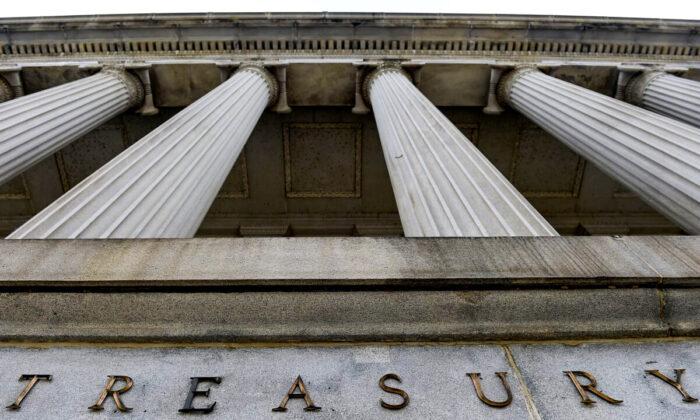Commentary
On Sunday, March 5, 1933, just one day after his inauguration, newly elected U.S. President Franklin Delano Roosevelt declared a banking “holiday,” closing all U.S. banks for four days. By the time the first banks began to reopen, financial regulators had scoured the banking system to determine which banks would survive and which would not.
Economists Milton Freidman and Anna J. Schwartz
note in their monetary history of the United States that of the 5,430 banks that were not licensed by the U.S. Treasury Department to reopen the following week, over 2,100 would never again open their doors, eventually being suspended, merged, or liquidated. In total, the Federal Deposit Insurance Corporation (FDIC)
estimates that there were 9,000 bank closures between 1930 and 1933. These bank failures cost investors and depositors $2.5 billion (
equivalent to $58.3 billion in 2023 values). By the time the crisis was over, total commercial bank deposits had fallen by 42 percent, and the total U.S. money stock had fallen by a third, exacerbating the credit crunch and extending the Great Depression by years.
In the following days, President Roosevelt would, often by extralegal use of emergency powers ratified only after the fact by a shell-shocked and thus pliant U.S. Congress, radically changed the financial and regulatory landscape of the United States. Most big banks were allowed to reopen, while thousands of small banks were not. Private U.S. citizens were banned from holding gold. The export of gold was outlawed to stop the flow of bullion from U.S. coffers. With the stroke of a pen and a figurative middle finger to the rule of law, clauses in private debt contracts requiring repayment in gold on demand were voided by Congress. The link between the dollar and gold was permanently broken, and the value of money became only what the government said it was.
In the main, these initial actions ended the banking crisis. However, the point is less whether these initiatives were good or bad. The point is that governments and regulators “never let a good crisis go to waste.” These powers proactively use banking crises, in some cases stimulating them, in order to impose sweeping changes that would never be allowed in normal times when fear and panic aren’t the prevailing sentiments.
That same year, 1933, the Federal Deposit Insurance Corporation was established, arguably increasing systemic moral hazard. The Securities and Exchange Commission was formed, along with a myriad of other three—or four—letter agencies that would dramatically and permanently consolidate power in the hands of the federal government and envelop American business in a web of bureaucratic red tape which increasingly tightens and binds.
Subsequent crises would tend in the same direction—that is, toward increased centralized government control over both the financial and real economy. The savings and loan (S&L)
crisis of 1986–95 led to the closure of over 1,000 of the more than 3,200 U.S. S&L institutions, cost taxpayers $132 billion ($312 billion in 2023 values), and resulted in the insolvency of the S&L equivalent of the FDIC. The S&L crisis brought a new wave of consolidation and regulatory reform, as did the global financial crisis of 2008–09, resulting in the monstrosity of banking legislation called Dodd-Frank and the increase of government control over the “too big to fail” (TBTF) banks.
Could it be possible that the Biden administration and the federal regulatory bodies see a silver lining in a new, still unfolding, banking crisis? What ends might such a crisis permit?
Consolidate the Banks?
One of the opportunities (from a government regulatory perspective) is to accelerate the process of banking sector consolidation. Among other benefits, this would reduce supervisory complexity into fewer but much larger banks, which would be under the control of the Federal Reserve rather than state regulators or less competent agencies.Pro-consolidation arguments focus on financial system stability. One financial journalist
writes, “Consumers get lots of choice, but the competition such a fragmented system breeds can lead to instability.” This is a strange line of reasoning. Thousands of small banks may not make for a very efficient system, but, like widely distributed and independent nodes on a network (think the internet, interbank payment systems, or the blockchain technology behind crypto), there is resiliency and security in decentralization. The breaking of one strand or node doesn’t take the whole system down with it.
Grossly reducing the number of banks won’t, however, prevent
deposit flight. Deposits are
moving from regional and smaller banks to the TBTF banks, yes, but most of the
movement of deposits to date has been to money market funds or directly into Treasurys yielding 4–5 percent, well above the 0.25–1.5 percent that bank deposits offer.
By their nature, banks have an inherent weakness, which is liquidity (or maturity) mismatch. While their liabilities are liquid—that is, deposits that can be pulled quickly in times of trouble—their assets are illiquid—that is, loans or investment securities that (especially when interest rates rise rapidly) can only be sold at a steep discount to carrying value. In normal times, this poses no problem, but when depositors and investors get twitchy, it can spell the end of the bank and instability for the system. This is as true for the TBTF banks (see 2008, e.g.) as it is for the regionals, but with even greater consequence.
Consolidation will further concentrate this risk in the TBTF systemic banks that were the epicenter of the global financial crisis. Too much consolidation, along with increasing regulatory oversight, will lead to even fatter, lazier, and slower banks, without reducing the risk of bank runs and liquidity crises.
Today, the plethora of regional and smaller banks provide diversification, extend credit to small businesses the big banks won’t touch, and afford at least some protection from the de-platforming, de-banking, and even outright asset seizures that we’ve already
seen the TBTF banks are more than willing to undertake. And, most important, they distribute risk across a widely decentralized network.
Here is a hypothetical of how the crisis could play out. Assume that bank runs resume, and become systemic, threatening the stability of the U.S. financial system. Regulators step in and, over a long weekend or extended bank holiday, close hundreds or even thousands of weakened regional and community banks. Assets and deposits are sold on the cheap to a few dozen increasingly TBTF banks. The regulatory triple alliance of the Fed, the FDIC, and the U.S. Treasury funds and guarantees the liabilities of the new TBTF system. The Fed plugs the deposit gap for the remaining TBTF banks by providing unlimited liquidity. This results in a backdoor nationalization of the U.S. banking system, not through a Troubled Assets Relief Program-like equity ownership as seen in 2008, but through loans created by the Fed and backstopped by the U.S. Treasury. Cryptocurrency is further banished from the banking system, eliminating the on and off ramps that allow Bitcoin and Ethereum to be exchanged to and from fiat. Gold once again becomes contraband. Among other things, inflation soars, credit is tightened, unemployment surges, and the economy craters.
Alternatively, the Federal Reserve directly issues a newly created central bank digital currency (CBDC) to uninsured depositors of the closed regional and community banks, consolidating these liabilities directly on the central bank’s balance sheet. The
dangers of CBDCs, including total government surveillance and control, become a reality. Social credit scores follow, along with the behavior modification that comes from knowing that certain purchases or political views can result in negative scores, along with limitations on use, or even outright confiscation, of CBDC assets.
This, as mentioned, is a hypothetical. The details of the illustration may be wrong, but the direction of travel is likely not. The banking crisis, which is
far from over, may create the opportunity for a “great reset” of the banking and financial freedoms that Americans have today.





